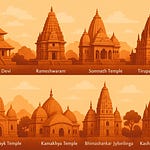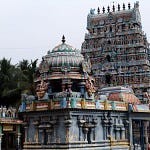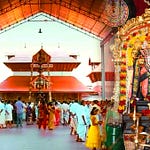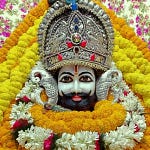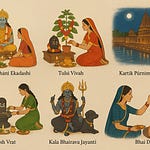Among all the festivals celebrated in India, few reflect simplicity, discipline, and devotion as deeply as Chhath Puja, the great festival of the Sun. Observed mainly in Bihar, eastern Uttar Pradesh, Jharkhand, and parts of Nepal, this ancient festival honors Surya Dev (the Sun God) and Chhathi Maiya (his sister or consort, often identified with Usha, the goddess of dawn).
Chhath Puja stands apart from other Hindu festivals because it is dedicated not to idols or temples, but to natural elements - the rising and setting sun, rivers, and the life-sustaining energy of the cosmos. It is a festival of gratitude, self-purification, and balance between humanity and nature.
Celebrated twice a year - once in Chaitra (March–April) and the grander version in Kartik (October–November) - Chhath follows six days after Diwali and marks the end of the festive season in Bihar.
History and Origin
The origins of Chhath Puja trace back thousands of years, deeply intertwined with both mythology and early solar worship traditions of the Vedic period. The ritual of offering water to the rising and setting sun - known as Arghya - is among the oldest forms of Hindu prayer, mentioned in several ancient scriptures.
According to legends, Lord Rama and Sita performed Chhath Puja after their return from exile to thank the Sun God for their wellbeing and for the strength that sustained them. Another myth links it to the Mahabharata, where Kunti, mother of Karna, performed Chhath rituals to invoke Surya Dev. Karna, being the son of the Sun God, was himself known as a devout sun-worshipper who never missed his daily offerings.
Historically, Chhath is believed to predate both these epics. It may have originated as a tribal and agrarian sun festival in the fertile plains of the Ganga, where the prosperity of crops depended on sunlight, water, and the rhythm of the seasons. The rituals evolved through centuries, absorbing Vedic practices, regional customs, and local beliefs - yet maintaining their essential purity and ecological harmony.
Religious and Cultural Significance
Chhath Puja holds immense spiritual significance. The Sun, as the source of all life and energy, represents divine power, health, and prosperity. Devotees observe Chhath to express gratitude to Surya for sustaining life and to seek his blessings for the wellbeing of their family, particularly children.
The festival also venerates Chhathi Maiya, believed to be the goddess who protects children and ensures fertility, prosperity, and happiness in families. For women, especially mothers, the ritual holds deep emotional and spiritual importance.
Chhath is also seen as a path to purification - not only of the body through fasting and abstinence, but of the mind through devotion and self-control. Every step of the ritual demands sincerity, humility, and faith. The devotee, known as the Parvaitin, must maintain absolute cleanliness, calmness, and truthfulness throughout the observance.
Socially, Chhath transcends caste, class, and status. It is the festival of the common people - where every devotee, regardless of background, stands together in the river, facing the same sun, offering the same prayer.
The Four Days of Chhath Puja
Chhath Puja is a four-day ritual that combines physical discipline with spiritual dedication. Each day has a specific meaning and process.
1. Nahay-Khay (The Day of Purification)
The first day marks the beginning of the observance. Devotees take a holy bath in rivers or ponds, especially the Ganga or its tributaries. The water symbolizes purification, and the devotee begins a state of sacred discipline. The house is thoroughly cleaned, and a simple, pure meal is prepared - usually rice, bottle gourd (lauki), and gram dal cooked in bronze utensils. This is the last full meal before fasting begins.
2. Kharna or Lohanda (The Day of Fasting)
On the second day, the devotee observes a fast that continues until sunset - without water. In the evening, after offering prayers to the setting sun, the fast is broken with gur ki kheer (rice pudding made with jaggery), roti, and fruits. The meal is offered first to Surya Dev and Chhathi Maiya, and then consumed as prasad. After this, a stricter fast begins, without food or water, lasting until the next sunrise.
3. Sandhya Arghya (The Evening Offering)
This is the most important day of the festival. Families and devotees gather at riverbanks, ponds, and ghats decorated with bamboo huts and sugarcane arches. The Parvaitins stand in knee-deep water at sunset, holding bamboo trays (soop) filled with offerings like thekua (a sweet made of wheat flour and jaggery), fruits, sugarcane, betel leaves, and coconut. The first Arghya (offering) is made to the setting sun, symbolizing gratitude for the life-giving light. Traditional folk songs and Chhath geet fill the air, and the atmosphere becomes one of serene devotion.
4. Usha Arghya (The Morning Offering)
Before dawn on the fourth day, devotees again assemble at the ghats to offer Arghya to the rising sun. This marks the conclusion of the festival and symbolizes the renewal of energy, hope, and life. After this final prayer, devotees break their fast and distribute prasad among family and neighbors. The end of Chhath is marked by a sense of spiritual completion, purity, and communal harmony.
Chhath Puja 2025 Dates and Schedule
Sat, 25 Oct, 2025 – Tue, 28 Oct, 2025
Day 1 – Nahay Khay:
Saturday, 25 October 2025
Devotees take a holy dip in rivers or ponds, clean their homes, and eat a simple satvik meal to begin the festival.Day 2 – Kharna (Lohanda):
Sunday, 26 October 2025
A day-long fast without water is observed. In the evening, devotees break the fast after sunset with jaggery kheer (gur ki kheer) and begin the nirjala vrat (fast without water).Day 3 – Sandhya Arghya (Evening Offering):
Monday, 27 October 2025
Devotees gather at riverbanks or ghats at sunset to offer the first Arghya to the setting Sun with fruits, thekua, and sugarcane.Day 4 – Usha Arghya (Morning Offering):
Tuesday, 28 October 2025
The final morning offering is made to the rising Sun, after which devotees break their fast and distribute prasad, marking the conclusion of Chhath Puja 2025.
The Vrat and Austerity
The Chhath Vrat is among the toughest in the Hindu tradition. The devotee abstains from food, water, and even sleep during the main days of worship. The vrat is not a display of endurance but an act of surrender and discipline - a way to purify the body and focus the mind on gratitude and humility.
The entire process, from preparation to completion, follows a strict code of cleanliness and sincerity. Clothes worn by devotees are unstitched and washed in the same holy water used for rituals. Even the kitchen used for preparing prasad is treated as a sacred space.
Rituals, Aarti, and Devotional Practices
The rituals of Chhath are performed with deep simplicity and faith. The offering of Arghya is the centerpiece - devotees pour water toward the sun while standing in rivers or ponds, symbolizing the connection between cosmic energy and human existence.
During both the evening and morning Arghya, devotees perform Aarti with earthen lamps, flowers, and incense, chanting hymns dedicated to Surya Dev and Chhathi Maiya. The melodic Chhath Geet - traditional folk songs sung by women - form an inseparable part of the festival, expressing devotion, family affection, and gratitude.
Food, Offerings, and Prasad
All food items used during Chhath are pure and vegetarian, prepared without salt, onion, or garlic. Every dish is cooked in ghee, using earthen or bronze utensils.
The most iconic offering is Thekua, a sweet made from wheat flour, jaggery, and ghee, fried to golden crispness. It symbolizes purity and simplicity. Other offerings include fruits, coconuts, sugarcane, rice laddoos, bananas, and betel leaves.
After the morning Arghya, these items are distributed as Prasad, considered sacred and believed to carry the blessings of Surya and Chhathi Maiya.
Temples, Rivers, and Sacred Sites
While Chhath is celebrated everywhere in Bihar, certain places hold special significance.
Deo Sun Temple in Aurangabad is one of the oldest sun temples in India and a focal point for Chhath devotees.
Umga Sun Temple in Madanpur and Navagraha Surya Mandir in Sitamarhi are also prominent centers of worship.
The Ganga, Kosi, Gandak, and Sone rivers become the primary sites of worship. During the festival, cities like Patna, Gaya, and Bhagalpur witness thousands of devotees thronging the ghats, transforming the rivers into living sanctuaries of devotion.
Environmental and Cultural Dimensions
Chhath Puja is also a festival of environmental harmony. The rituals emphasize natural purity - the use of organic materials like bamboo, clay, and fruits instead of synthetic items. The offering to the Sun connects humans to the cycles of nature, reminding them of their role as caretakers of the environment.
Culturally, Chhath is a symbol of Bihar’s identity and pride. It unites communities, families, and generations. Even those who live far away from Bihar recreate the rituals by lakes, ponds, and rivers abroad - keeping their traditions alive.
The Spirit of Chhath
Chhath Puja is not merely a festival; it is a journey of devotion, endurance, and purity. It celebrates the eternal relationship between humans and the Sun - between life and light, effort and reward.
For four days, people renounce comfort, ego, and indulgence, surrendering completely to gratitude. The festival transforms ordinary landscapes into sacred spaces, and ordinary individuals into vessels of faith.
In its essence, Chhath teaches that spirituality is not found in temples or rituals alone but in balance - between humans and nature, body and spirit, giving and receiving. It reminds us that when we bow before the rising and setting sun, we are bowing not only to a god, but to the eternal rhythm of life itself.






